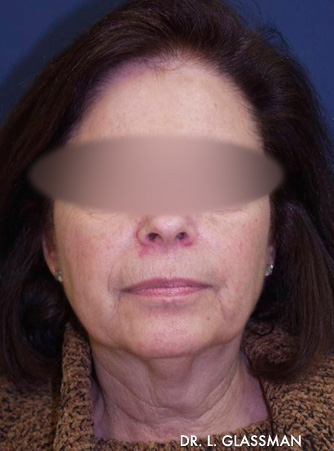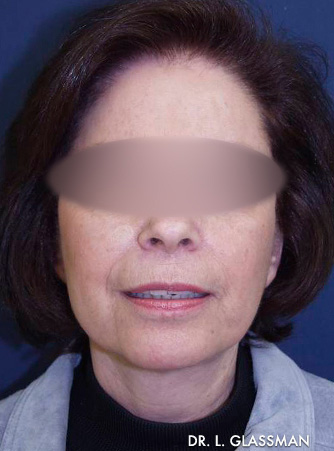Facelift
 Facelifts counteract signs of facial aging by tightening loose muscle, removing excess fat, and trimming sagging skin, giving your face a fresh and youthful look. After surgery, some patients look 10 to 15 years younger.
Facelifts counteract signs of facial aging by tightening loose muscle, removing excess fat, and trimming sagging skin, giving your face a fresh and youthful look. After surgery, some patients look 10 to 15 years younger.
In time, gravity, sun exposure, and the stresses of daily life take their toll on our faces and necks. Deep creases appear beside the mouth, the jawline slackens and becomes jowly, and the neck develops loose folds and fat deposits. If you’ve noticed these issues, a facelift may be right for you.
WHICH SIGNS OF AGING CAN BE CORRECTED?
Facelifts, technically known as rhytidectomies (literally, “removal of wrinkles”), rejuvenate the mid-to-lower face and neck. Facelifts are most effective for patients who want to correct:
- Midface sagging
- Deep creases under the eyes
- Deep creases between the corners of the nose and the corners of the mouth (the nasolabial folds)
- Jowls due to loss of muscle tone
- Sagging areas of fat
- Loose skin and fat under the chin and jaw


Facelifts can produce a dramatic improvement in appearance for patients with the problems mentioned above. However, facelifts do not stop the aging process; in time, signs of aging will gradually appear once again.
Furthermore, facelifts will not rejuvenate the brow, eyelids, nose, and some regions of the midface. Patients who want to improve these areas may consider combining a facelift with a brow lift or eyelid surgery (blepharoplasty).
Injectable soft-tissue fillers and facial implants are procedures that can be paired with a facelift to enhance their effects.
Good Candidates for a Facelift
The best candidates for rhytidectomy:
- Wish to improve one or more of the signs of aging indicated above
- Are men or women whose faces have begun to sag but whose skin still has some elasticity
- Are generally healthy
- Do not smoke
- Have realistic expectations
- Are considering a facelift for personal reasons, not because someone else is pressuring them to do so
During your consultation, your doctor will discuss whether a facelift is right for you.
My experience with Dr. Glassman was amazing. From the moment I read his credentials and affiliations to the moment I walked into his office, I knew that this would be a seamless experience. I had a complete facelift (rhytidectomy). As soon as I met Dr. Glassman, I felt a sense of comfort and he put my mind at ease. He was sincerely honest and has a great bedside manner. All of my questions were answered, and Dr. Glassman was extremely patient and thorough with me and my family! From start to finish, Dr. Glassman was professional, honest & very supportive.
Read More Testimonials
Facelift Procedure – Techniques
Facelifts are typically outpatient procedures and may be performed in an office-based facility, surgery center, or hospital. Patients may have a choice of IV sedation or general anesthesia. The procedure takes about two hours.
The way a facelift is performed varies depending on the surgeon, the patient’s facial structure, and the extent of correction desired. The three most common incision techniques are:
- Traditional facelift: The “full” facelift for rejuvenating the face, jowls, and neck, including fat sculpting, lifting and repositioning of muscle and deeper tissues, and skin trimming and redraping. The incision begins at the temple and travels down to the front of the ear, around the earlobe, and behind the ear to the lower scalp at the hairline. Sometimes, another incision is made under the chin.
- Limited-incision facelift: For limited rejuvenation around the eyes and mouth, including the nasolabial folds and other deep creases. Short incisions are made at the temple and around the ear, and possibly in the lower eyelid and/or under the upper lip as well.
- Neck lift: A neck lift concentrates on jowls, loose skin on the neck, and fat under the chin. The incision is made around the earlobe and behind the ear to the lower scalp.
In all three methods, incisions are closed with stitches or tissue glue. Scars are hidden in the hairline and natural contours of the face.
Recovery After a Facelift
After your rhytidectomy, Dr. Glassman will wrap the incisions in bandages and may place drainage tubes in the area. The tubes will be taken out the next day when your hair will be carefully washed. If surgical clips were used to hold the incisions closed, they will be removed one week after the facelift, along with your stitches.
At first, you may experience swelling, numbness, bruising, and a feeling of tightness or tension in the face and neck. Your face may look temporarily uneven or distorted, and your facial muscles may feel stiff. Most of these usually resolve within three to six weeks, and sensation typically returns to normal within a few months. In time, scars become less red, raised, lumpy, or itchy.
Painkillers may be prescribed to help with post-operative discomfort or pain. To help ameliorate swelling and bruising, it will be necessary to keep your head elevated while you are asleep. Ice packs can also be used to reduce these issues.
Many patients return to work by the third week. Camouflage cosmetics can be used to minimize the appearance of bruising.
You should be gentle with your skin and hair as you recover. Men may need to shave behind the neck and ears where areas of beard-growing skin have moved.
Results of a Facelift
The results of a facelift do not last forever. You may want to have another procedure in five or ten years. But in another sense, the effects are permanent – years later, your face will continue to look better than if you had never had a facelift.
Possible complications of a facelift include bleeding, infection, bruising, uneven swelling, or discoloration, allergic reaction to the anesthesia, skin blistering (usually only seen in smokers), and temporary or permanent loss of sensation in the face. Dr. Glassman will discuss the risks and benefits of a facelift with you before your surgery.
Risks Associated with Facelift
Find out more about the facelift procedure and the rejuvenation it can provide – contact Glassman Plastic Surgery to set up a consultation. Dr. Lawrence Glassman will be available to answer your questions and describe the procedure in further detail.
How Much Does Facelift Cost?
The cost of a Facelift will depend on several factors. The price can be affected by body type, type of technique performed, surgical complications, and even allergies. Find out more by scheduling a consultation.
Schedule a Consultation
As one of the most well-regarded plastic surgeons performing Facelift in New York, Dr. Glassman is here to answer all your questions about Facelift. To confirm whether you are an ideal candidate for Facelift, contact us today to schedule your in-person consultation.
Related Blogs

The Facelift: Make Those Years Disappear!
Does your face make you look older than you actually are? Are you bothered by an abundance of crow’s feet and laugh lines? Do you wish you… Read More

The Benefits Of A Limited-incision Facelift
A limited-incision facelift, also sometimes called a weekend lift or a mini-lift, is a popular variation of a traditional facelift. As the name suggests, it’s a… Read More

